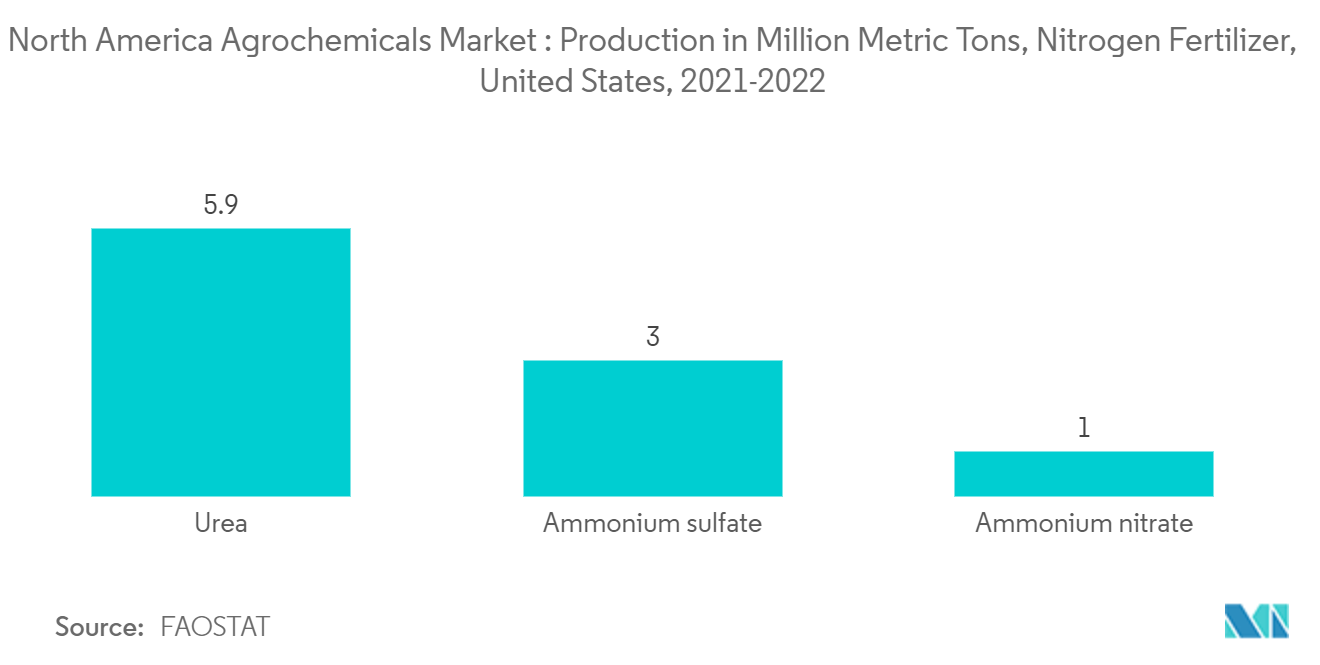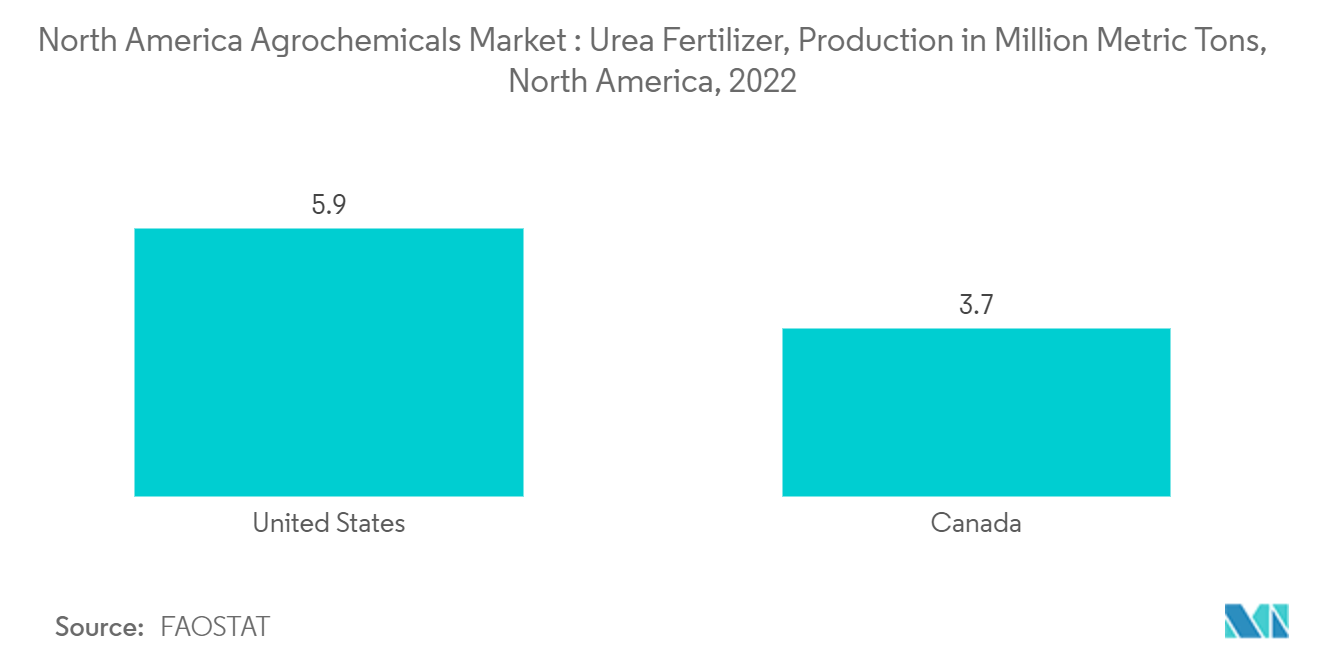Market Trends of North America Agrochemicals Industry
Fertilizers Constitute the Most Significant Sub-segment Under Type
North America is one of the leading regions in the manufacturing and marketing of almost all types of fertilizers worldwide. The United States and Canada are the largest producers in the region. Technical and scientific advancements have made the application of fertilizers more efficient in recent years and helped farmers maximize fertilizers’ benefits while reducing risks. Nitrogenous fertilizers are the most important fertilizers in agricultural production in the United States. According to the Fertilizer Institute report, the United States is one of the world’s fourth-largest producers of nitrogen fertilizers. As per FAO statistics, the United States produced 5.9 million metric tons of urea, 1.0 million metric tons of ammonium nitrate (AN), and 3.0 million metric tons of ammonium sulfate in 2022.
Canada is the third-largest producer of primary fertilizers (N, P, and K) globally, supported by the country's potash and nitrogen production capacities. As per the Canadian government’s statistics, Canada’s 10 active mines in Saskatchewan produced an estimated 24.6 million metric tons of potash in 2022, an increase of 1.3 million metric tons from 2021. Moreover, Canada is also the world’s largest exporter of potash. In 2022, Canada exported 21.2 million metric tons of potash, accounting for 39% of the world’s total exports. Canadian fertilizer is traded with over 75 countries, representing 2% of total Canadian exports.
The US Department of Agriculture reported that wheat, corn, soybean, and cotton accounted for approximately 60% of nitrogen, phosphate, and potash fertilizers in the previous year. Corn and wheat stood out as the primary cereals, receiving a significant share of NPK fertilizers. ITC Trade Map statistics revealed that North America's corn exports surged from USD 51,910.3 million in 2021 to USD 53,068.5 million in 2023. This uptick in corn exports increased the use of fertilizers, owing to the need to boost yields from the same area.

The United States Dominates the Market
The United States is one of the most dominant players in the agrochemicals market. According to a study conducted by the US Department of Agriculture and Environmental Protection Agency (EPA), chlorpyrifos and acephate are the most commonly used pesticide active ingredients in the country's agriculture sector. Currently, corn, soybeans, wheat, and cotton account for the most use of agrochemicals in the market. As reported by FAO, soybean yield increased from 31.88 thousand hectares in 2019 to 33.31 thousand hectares in 2022. This increase in yield indicates the rise in the country's use of agrochemicals.
According to statistics from the World Bank, the agricultural land in the United States remained constant at 44.4% from 2019 to 2021. Urbanization and industrialization are the major reasons for restricting the expansion of agricultural land in the United States. There is little scope for arable land expansion in the coming years. According to the American Farmland Trust (AFT), in the past 20 years, the United States has converted around 31 million acres of agricultural land into commercial, residential, and industrial areas. However, farmers in the region are applying fertilizers to increase their crop yield and feed the growing population.
The United States is one of the largest exporters of nitrogen fertilizers, which makes it an attractive investment destination. Urea, calcium ammonium nitrate (CAN), ammonium nitrate, and ammonium sulfate are the major nitrogen fertilizers in the country; urea is the most significant among them. For instance, as per FAO statistics, the United States produced 5.2 million metric tons of urea fertilizer in 2021, which increased by 5.9 million metric tons in 2022.
Major players in the country are undergoing strategic product launches to expand their product portfolio. For instance, in 2021, Corteva AgriScience launched the DuraCor herbicide for pastures and rangeland in the United States. DuraCor is expected to control more than 140 broadleaf weed species, as well as offer several anticipated features, such as low use rate and low odor formation.


